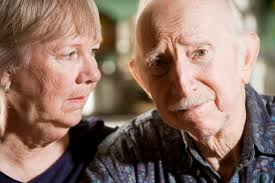 In our continuing series focusing on health and wellness for older adults and the elderly, Part 3 discusses how you can promote positive bone, joint and muscle health as you age in place. As noted in previous blog articles in this series, your body goes through a normal process of changes that affect your physical, mental and emotional make-up. Bones, joints and muscles are particularly prone to weakening in strength as we age, so maintaining a daily regimen that promotes good health is essential to preventing future injuies associated with the aging process.
In our continuing series focusing on health and wellness for older adults and the elderly, Part 3 discusses how you can promote positive bone, joint and muscle health as you age in place. As noted in previous blog articles in this series, your body goes through a normal process of changes that affect your physical, mental and emotional make-up. Bones, joints and muscles are particularly prone to weakening in strength as we age, so maintaining a daily regimen that promotes good health is essential to preventing future injuies associated with the aging process.
MY BONES, JOINTS AND MUSCLES
What to expect: As you age, bones oftentimes will shrink in size and density leading them to weaken, therefore making them more susceptible to fracture and injury (see our hip fracture blog series). As muscles lose their strength and flexibility, older adults can become less coordinated and less able to maintain proper balance. These diminishing conditions can often lead to falling and other fall-related injuries. It is not uncommon to become a little shorter in height, as well.
What you can do about it: It is never too late to start a daily regimen that promotes positive bone, joint and muscle health. Here’s our plan:
CALCIUM: Produce adequate amounts of calcium. The Institute of Medicine in the United States recommends 1,000 milligrams (mg) of calcium per day for older adult men ages 51 to 70 years of age; and 1,200 milligrams per day for older adult men aged 71 For older adult women age 51 and older the recommended amount is 1,200 milligrams (mg) of calcium per day. Calcium intake includes dietary sources such as dairy products, broccoli, kale, salmon, sardines, tofu and almonds. If you are calcium deficient, consult with your physician about taking calcium supplements as part of your dietary regimen.
VITAMIN D: The institute of Medicine also recommends adequate amounts of vitamin D. For older adults aged 55+ thec recommended amount is 600 international units (IU) of vitamin D per day; and 800 international units (IU) for older adults aged 71 plus. Although natural sunlight is considered a primary source of vitamin D, most older adults and the elderly tend to remain indoors most of the day. As such, older adults can seek other substantuial sources of vitamin D to add to their diet such as tuna, sardines, egg (yolks), and fortified milk. If you are still vitamin D deficient, consult with your physician about taking a vitamin D supplement.
AVOID SMOKING AND ALCOHOL: Avoid smoking at all costs. If you do smoke or ingest other related tobacco products, consult with your physician on a plan to help you quit and/or gradually reduce your daily intake. If you must consume alcohol, it is recommended that you partake in no more than two “drinks” per day maximum.
PHYSICAL ACTIVITY/EXERCISE: To maintain or build strong bones and muscles whilst slowing bone density loss, a daily exercise routine is strongly encouraged. Weight bearing exercises such as walking, brisk/race walking, jogging (on grass not pavement), tennis, yoga/stretching, tai chi are just some examples of physical activities that promote and sustain strength, good health and mental wellness.
As always, we encourage all seniors to consult with a physician and/or health care professional regarding peronal health conditions, nutritional, dietary and exercise programs. We also advise to obtain and complete our First Response Personal Emergency Medical Data Form in the event of a medical emergency at home or outside.
To read more of this 5 part blog series, please click on the following links and go to: Part 1 (MY CARDIOVASCULAR SYSTEM; MY BLADDER & URINARY TRACT); Part 2 (MY DIGESTIVE SYSTEM); Part 4 (MY EYES & EARS; MY TEETH); and Part 5 (MY MEMORY; MY SEXUALITY).










 “I am very uneasy and have had many falls after my surgery. Ordering the First Response system was easy and I even set it up myself. I have had to use my alert button a few times so far. My daughter has even been contacted after I had taken a few falls. My First Response system has worked great each time I’ve needed it!”
“I am very uneasy and have had many falls after my surgery. Ordering the First Response system was easy and I even set it up myself. I have had to use my alert button a few times so far. My daughter has even been contacted after I had taken a few falls. My First Response system has worked great each time I’ve needed it!”